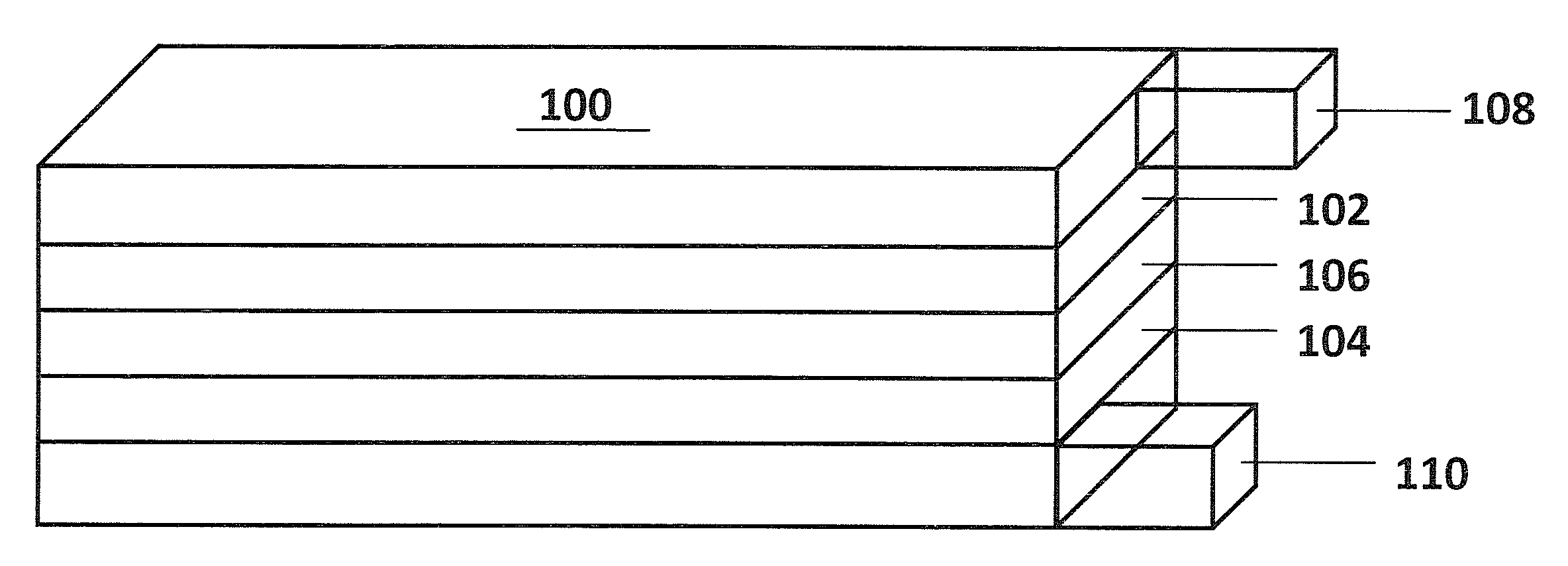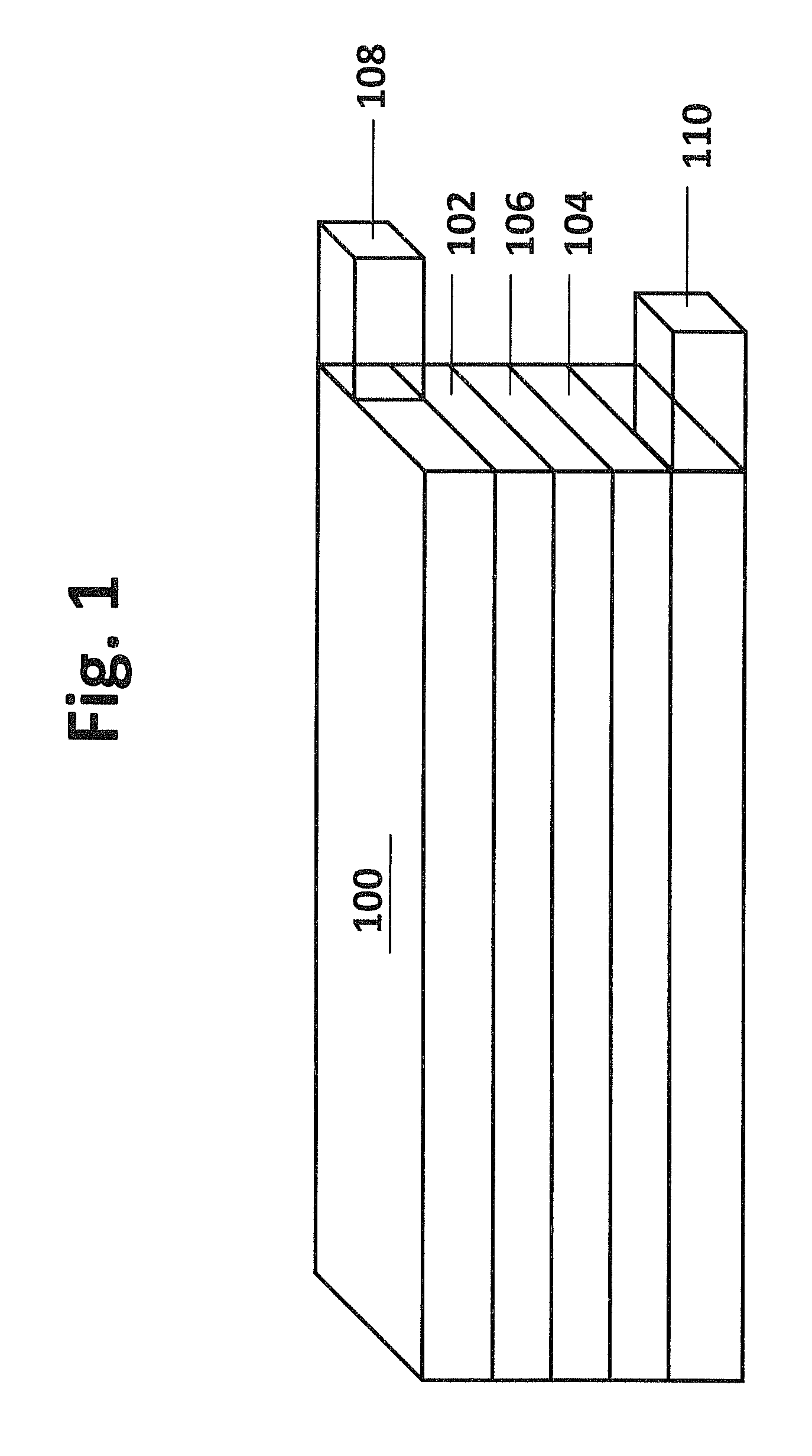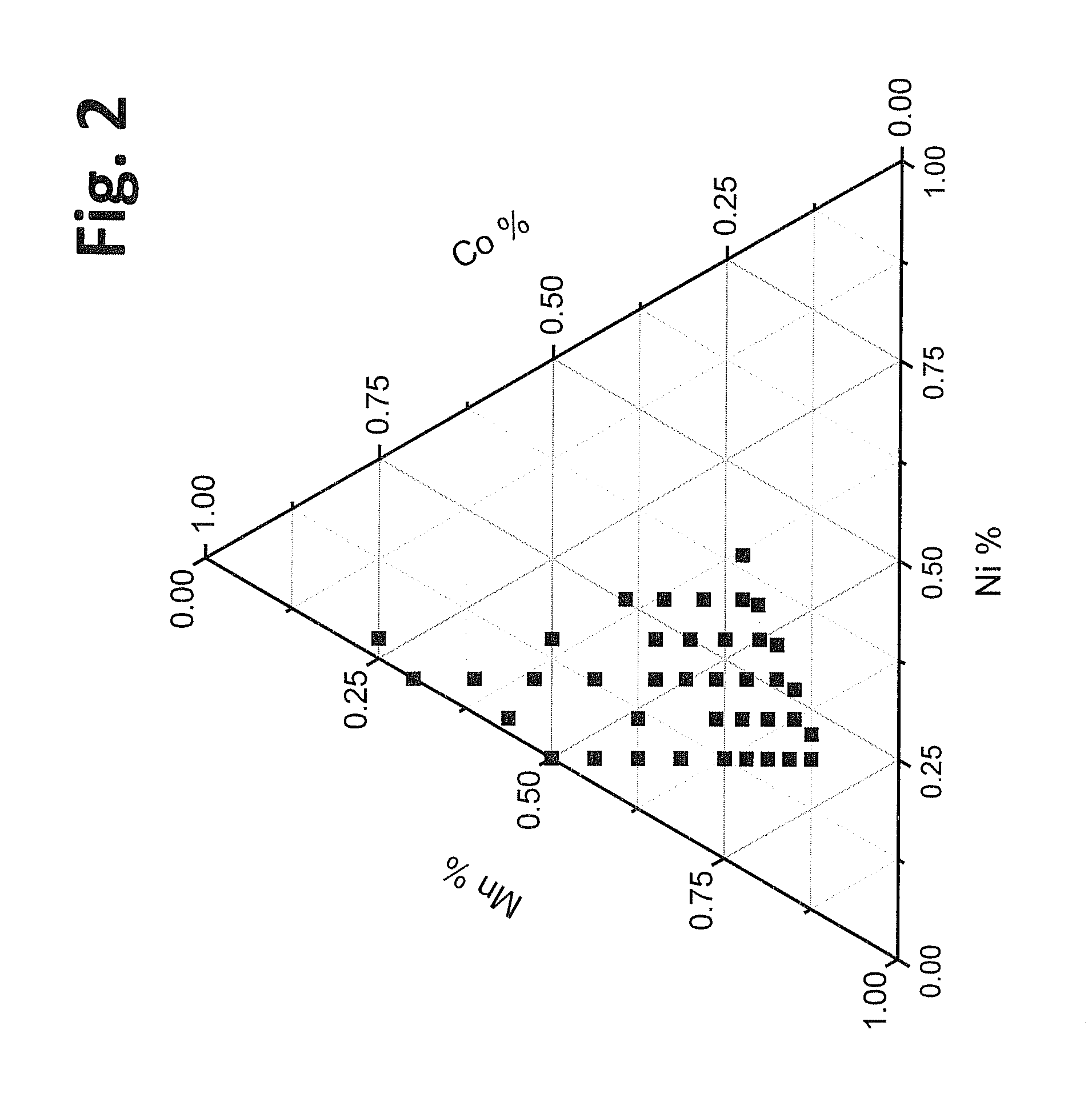Layer-layer lithium rich complex metal oxides with high specific capacity and excellent cycling
a complex metal oxide and lithium rich technology, applied in the direction of nickel compounds, cell components, sustainable manufacturing/processing, etc., can solve the problems of low energy density of battery cells and no significant improvement in energy density
- Summary
- Abstract
- Description
- Claims
- Application Information
AI Technical Summary
Benefits of technology
Problems solved by technology
Method used
Image
Examples
example 1
Synthesis of Lithium Rich Complex Metal Oxides
[0110]This example demonstrates the formation of a desired positive electrode active material using a carbonate or hydroxide co-precipitation process. Stoichiometric amounts of metal precursors were dissolved in distilled water to form an aqueous solution with the metal salts in the desired molar ratios. Separately, an aqueous solution containing Na2CO3 and / or NH4OH was prepared. For the formation of the samples, one or both solutions were gradually added to a reaction vessel to form metal carbonate or hydroxide precipitates. The reaction mixture was stirred, and the temperature of the reaction mixture was kept between room temperature and 80° C. The pH of the reaction mixture was in the range from 6-12. In general, the aqueous transition metal solution had a concentration from 1M to 3M, and the aqueous Na2CO3 / NH4OH solution had a Na2CO3 concentration of 1M to 4M and / or a NH4OH concentration of 0.2-2M. The metal carbonate or hydroxide pr...
example 2
Formation of MgO Coated Metal Oxide Materials
[0120]As described in this example, a portion of the LMO compositions synthesized as described in Example 1 were coated with magnesium oxide as a stabilizing coating. Application of a magnesium oxide coating over LMO material was performed by drying a magnesium composition onto the LMO followed by a calcination step. Specifically, magnesium nitrate was dissolved in a selected amount of water, and the positive electrode active material to be coated with MgO was dispersed in the magnesium nitrate solution. Then, this mixture was heated at a sufficient temperature for a few hours until reaching dryness. The dry powder was collected and fired at a temperature from 300-500° C. for 1-5 h in a conventional muffle furnace in a dry air. The LMO coated with about 0.5 wt % MgO were then used to form coin cell batteries following the procedure outlined above. The coin cell batteries were tested, and the results are described in examples below.
example 3
Battery Performance—First Set of Compositions
[0121]This example demonstrates the battery performance of coin cells formed with the lithium metal oxides with and without magnesium oxide coatings from Examples 1 and 2 above.
[0122]Coin cells were formed with positive electrodes incorporating powders synthesized as described in Examples 1 and 2. The coin cell batteries were tested for 24 charge and discharge cycles at discharge rates of C / 10 for cycles 1-2, C / 5 for cycles 3-4, C / 3 for cycles 5-6, 1 C for cycles 7-11, 2 C for cycles 12-16, 5 C for cycles 17-21, and C / 5 for cycles 22-24. Plots of specific discharge capacity versus cycle of the coin cell batteries are shown in FIGS. 4-9 along with the specific discharge capacity results for batteries with a second set of compositions described in Example 4 for comparison. Specifically, graphs shown in FIG. 4, FIG. 5, FIG. 6, FIG. 7, and FIG. 8 are directed to batteries with positive electrode active materials with approximate stoichiometri...
PUM
| Property | Measurement | Unit |
|---|---|---|
| average voltage | aaaaa | aaaaa |
| average voltage | aaaaa | aaaaa |
| average voltage | aaaaa | aaaaa |
Abstract
Description
Claims
Application Information
 Login to View More
Login to View More - R&D
- Intellectual Property
- Life Sciences
- Materials
- Tech Scout
- Unparalleled Data Quality
- Higher Quality Content
- 60% Fewer Hallucinations
Browse by: Latest US Patents, China's latest patents, Technical Efficacy Thesaurus, Application Domain, Technology Topic, Popular Technical Reports.
© 2025 PatSnap. All rights reserved.Legal|Privacy policy|Modern Slavery Act Transparency Statement|Sitemap|About US| Contact US: help@patsnap.com



